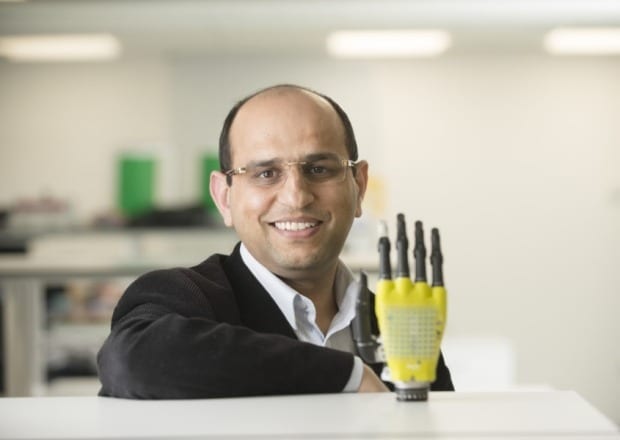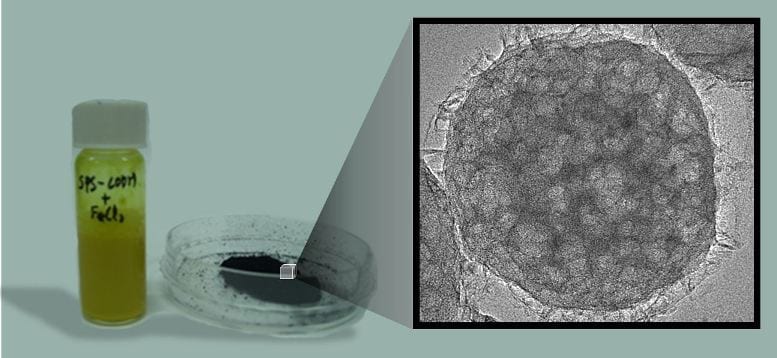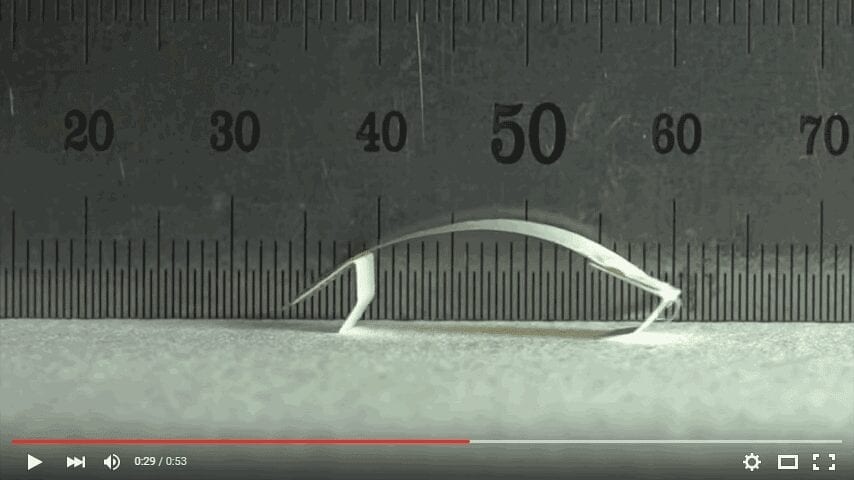
Graphene, a carbon allotrope which is one million times thinner than paper may now be able to be produced cheaply thanks to scientists in Glasgow.
Graphene was first isolated from graphite in 2004 being just a single atom thick but it is flexible, stronger than steel, and capable of efficiently conducting heat and electricity.
However, widespread industrial adoption of graphene has so far been limited by the expense of producing it, which could be reduced by almost 100 per cent of its current cost.
Affordable graphene production could lead to a wide range of new technologies reaching the market, including synthetic skin capable of providing sensory feedback to people with limb prostheses.
Researchers at the University of Glasgow have found a way to produce large sheets of graphene, using the same cheap type of copper used to manufacture lithium-ion batteries found in many household devices.
Graphene is often produced by a process known as chemical vapour deposition, or CVD, which turns gaseous reactants into a film of graphene on a special surface known as a substrate.
The research team used a similar process to create high-quality graphene across the surface of commercially-available copper foils of the type often used as the negative electrodes in lithium-ion batteries. The ultra-smooth surface of the copper provided an excellent bed for the graphene to form upon.
They found that the graphene they produced offered a stark improvement in the electrical and optical performance of transistors which they made compared to similar materials produced from the older process.
Dr Dahiya, of the University of Glasgow’s School of Engineering, said: ““The commercially-available copper we used in our process retails for around one dollar per square metre, compared to around $115 for a similar amount of the copper currently used in graphene production. This more expensive form of copper often required preparation before it can be used, adding further to the cost of the process.
Read more: Scots researchers make wonder material breakthrough
The Latest on: Graphene
[google_news title=”” keyword=”Graphene” num_posts=”10″ blurb_length=”0″ show_thumb=”left”]
via Google News
The Latest on: Graphene
- Graphene at 20: why the ‘wonder material’ is finally coming goodon April 30, 2024 at 6:31 am
Strong, light and with amazing electronic properties, graphene has always been touted as the “wonder material”. But two decades after it was first isolated, James McKenzie believes the graphene is ...
- HydroGraph to Supply Pristine Graphene to Volfpack Energy for Solar Power Battery Storageon April 30, 2024 at 5:20 am
HydroGraph Clean Power Inc. (CSE: HG) (OTCQB: HGCPF) (the “Company” or “HydroGraph”), a commercial manufacturer of pristine graphene, announced today that its flagship graphene product, FGA-1, has ...
- Graphene Manufacturing Group Announces Upsize of Offering to $3.024 Millionon April 30, 2024 at 4:42 am
NOT FOR DISTRIBUTION TO UNITED STATES NEWSWIRE SERVICES OR FOR DISSEMINATION IN THE UNITED STATES Base Shelf Prospectus Accessible and Prospectus Supplement to be Accessible on SEDAR+ BRISBANE, ...
- MASON RESOURCES UNDERSCORES BLACK SWAN GRAPHENE'S LAUNCH OF GRAPHENE-ENHANCED COMMERCIAL MASTERBATCHESon April 30, 2024 at 4:15 am
Mason Resources Inc. ("Mason") (TSXV: LLG) (OTCQX: MGPHF), a Canadian corporation focused on seeking investment opportunities, congratulates Black Swan Graphene on the successful launch of their ...
- BLACK SWAN GRAPHENE LAUNCHES GRAPHCORE: INNOVATIVE GRAPHENE NANOPOLATELETS PRODUCT FAMILY FOR TURNKEY SOLUTIONSon April 29, 2024 at 9:01 pm
TORONTO, April 30, 2024 /PRNewswire/ - Black Swan Graphene Inc. ("Black Swan") (TSXV: SWAN) (OTCQB: BSWGF) (Frankfurt: R96), proudly announces the commercialization and release of GraphCore™ 01 family ...
- Beyond Graphene: A New World of 2D Materials Is Opening Upon April 28, 2024 at 9:07 pm
Materials that are incredibly thin, only a few atoms thick, exhibit unique properties that make them appealing for energy storage, catalysis, and water purification. Researchers at Linköping ...
- Georgia Tech group create world’s first graphene-based semiconductoron April 26, 2024 at 10:13 am
A group of researchers at the Georgia Institute of Technology (Georgia Tech) have created the world’s first functional semiconductor made from graphene, a development that could lead to advanced ...
- Novel graphene oxide spray coating advances antiviral protection of face maskson April 22, 2024 at 9:57 am
In the relentless battle against airborne viruses, researchers have developed a new spray coating to improve the antiviral efficacy of personal protective equipment, notably face masks. The study is ...
- Graphene’s Light-Speed Electrons Promise Revolution in Nanoscale Transistorson April 18, 2024 at 3:24 pm
Researchers have shown that double-layer graphene can function both as a superconductor and an insulator, a property that could revolutionize transistor technology. This dual functionality allows for ...
- Premier Graphene demonstrates graphene integration with building materialson April 18, 2024 at 9:09 am
Premier Graphene has conducted in-house studies to showcase progress in the integration of graphene with construction materials.
via Bing News










